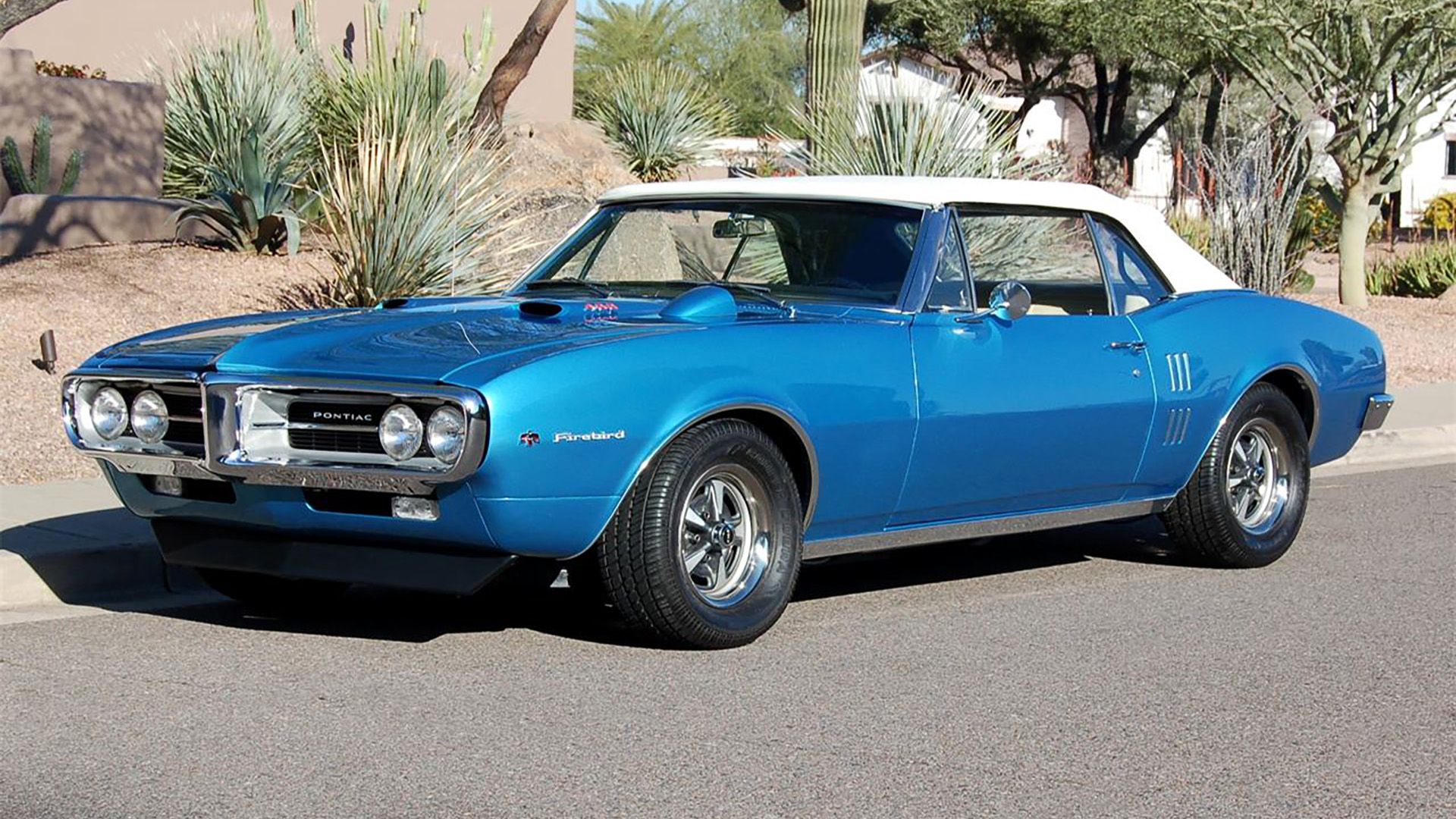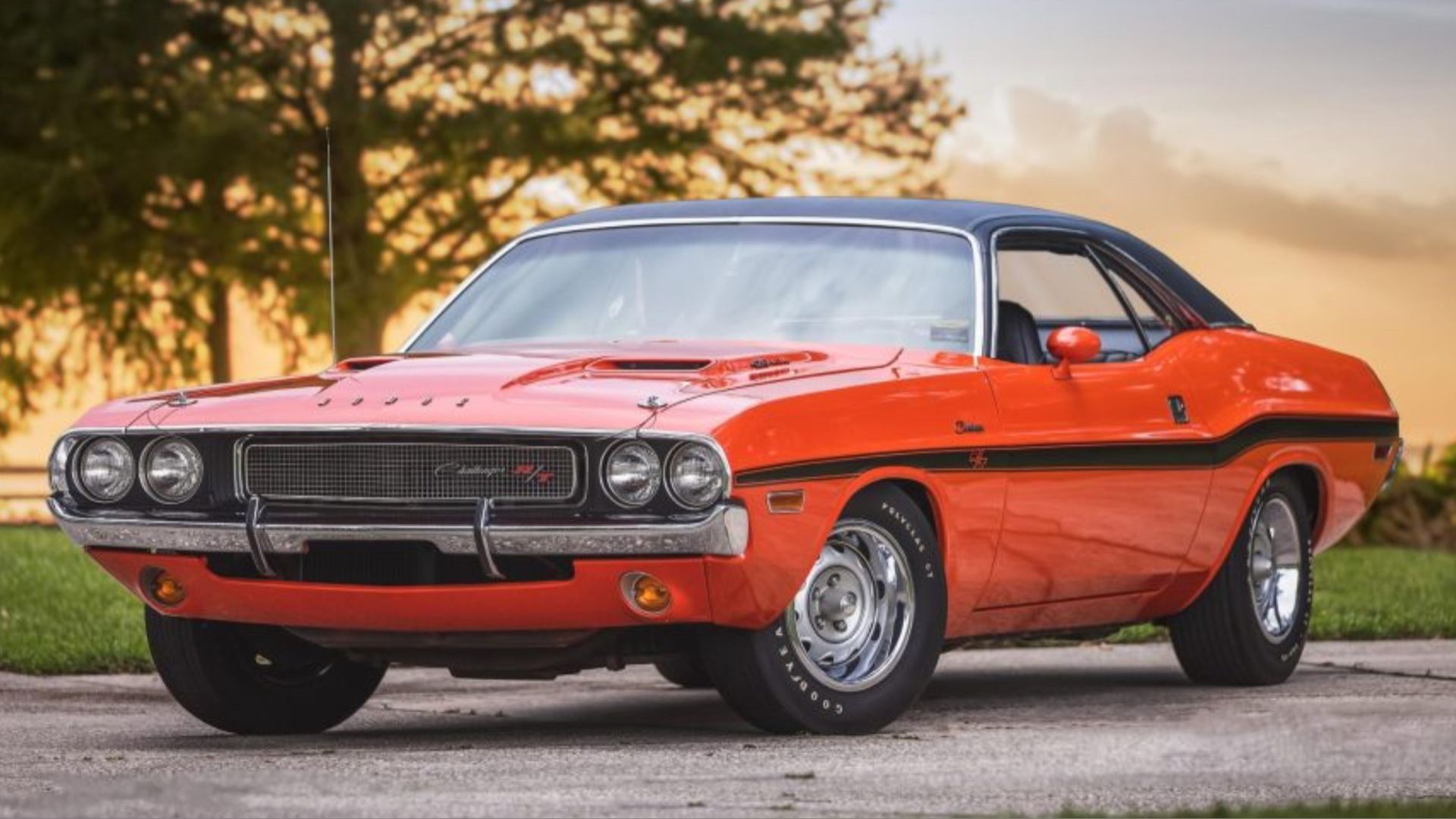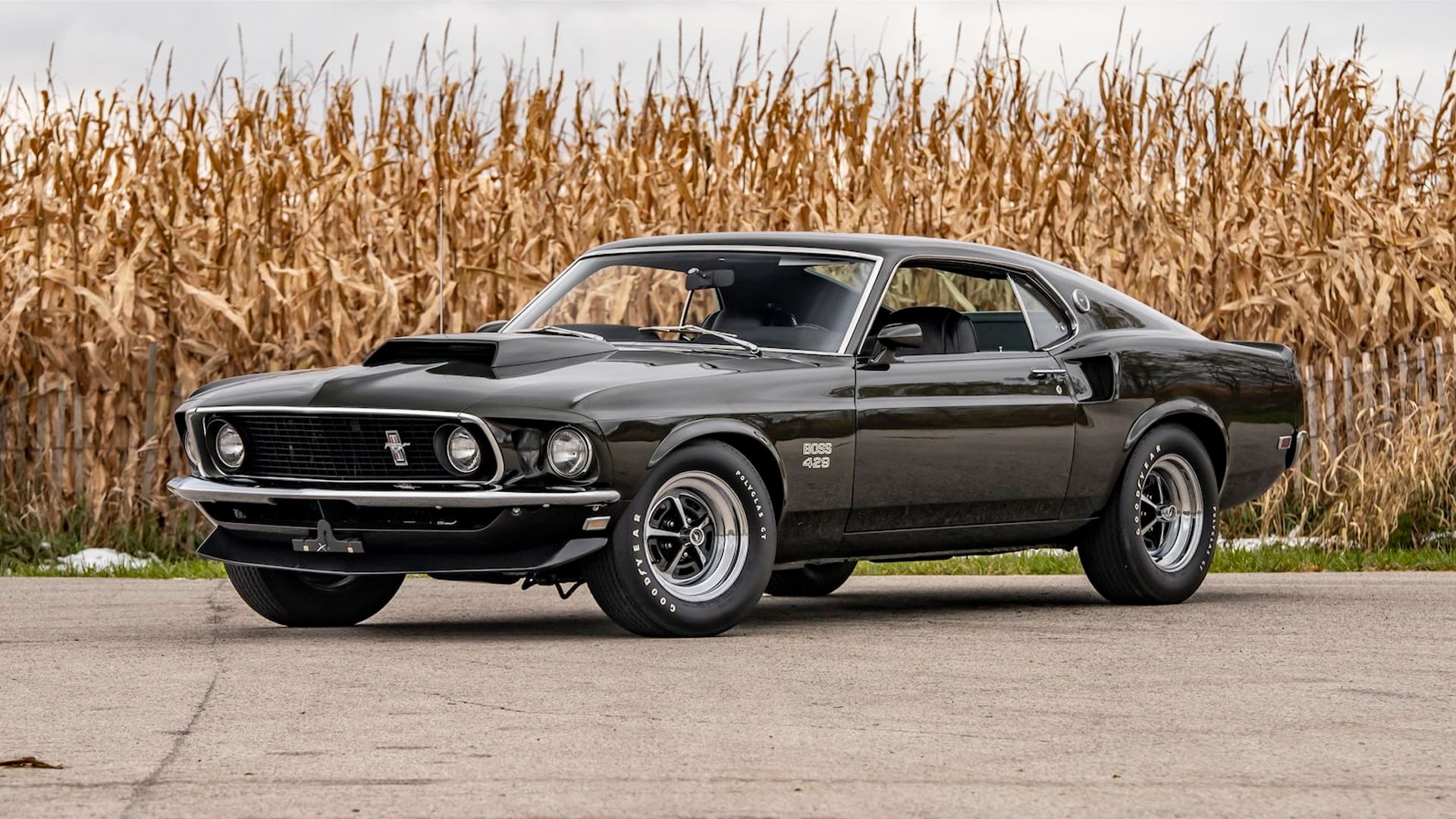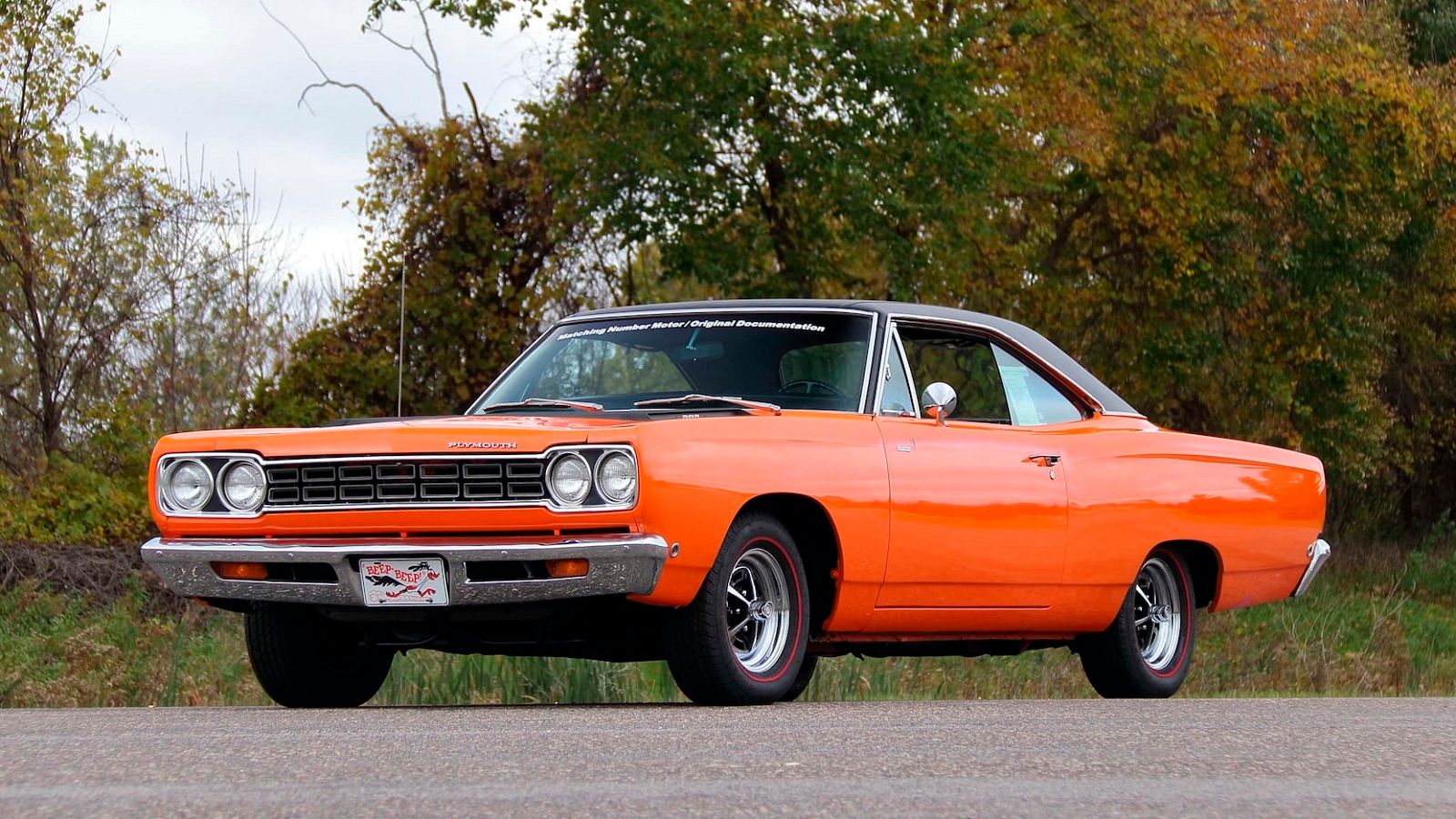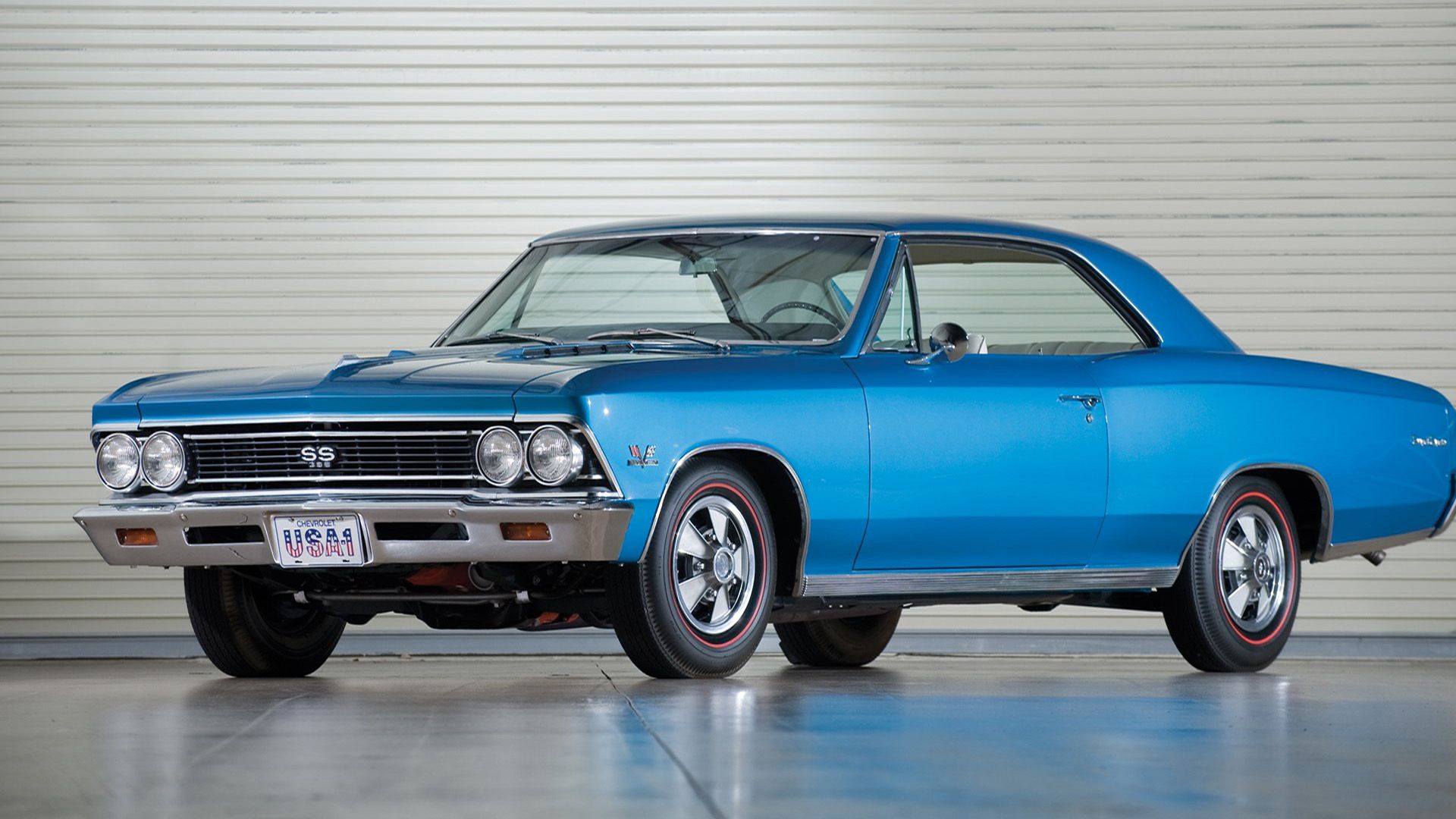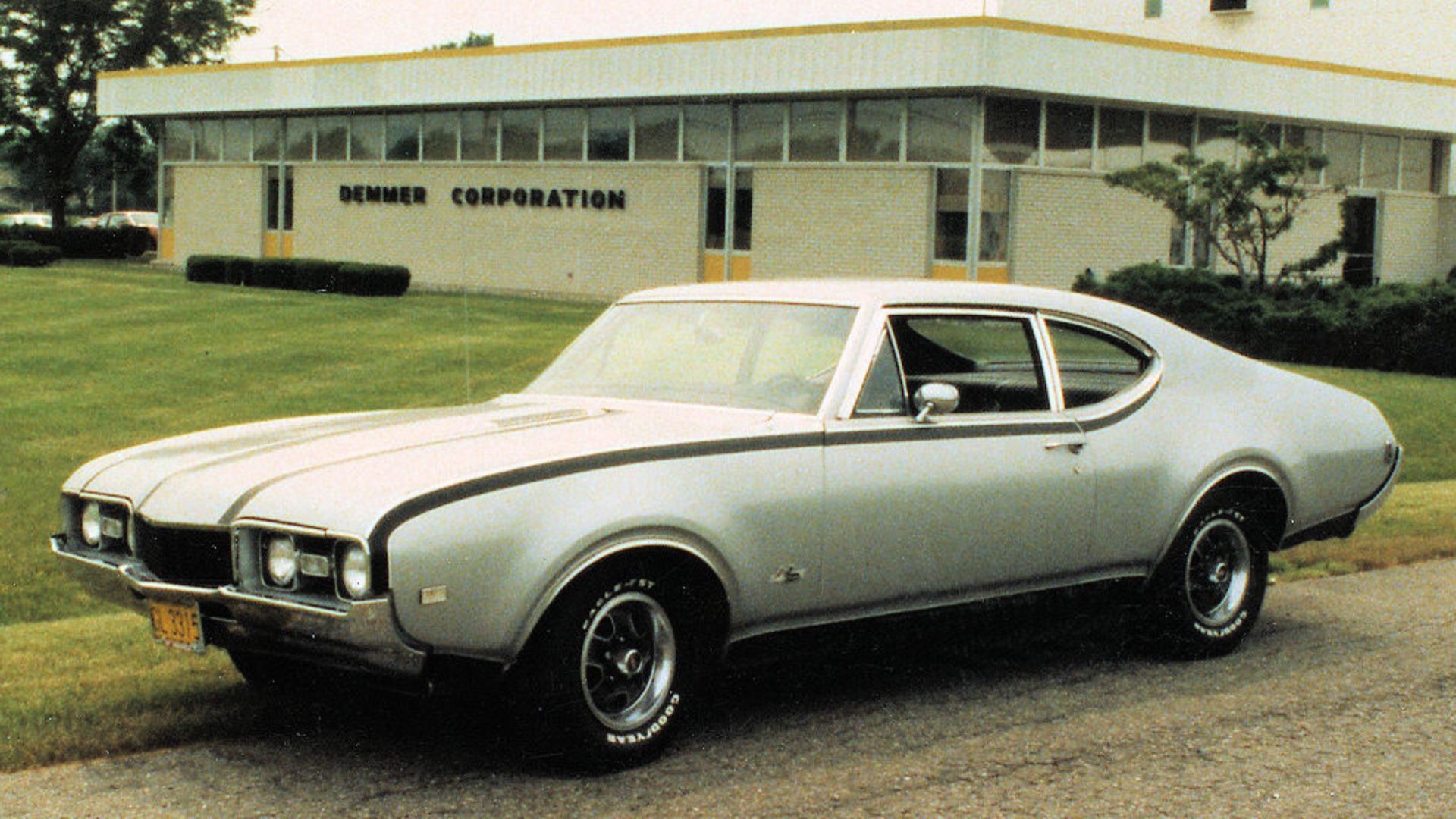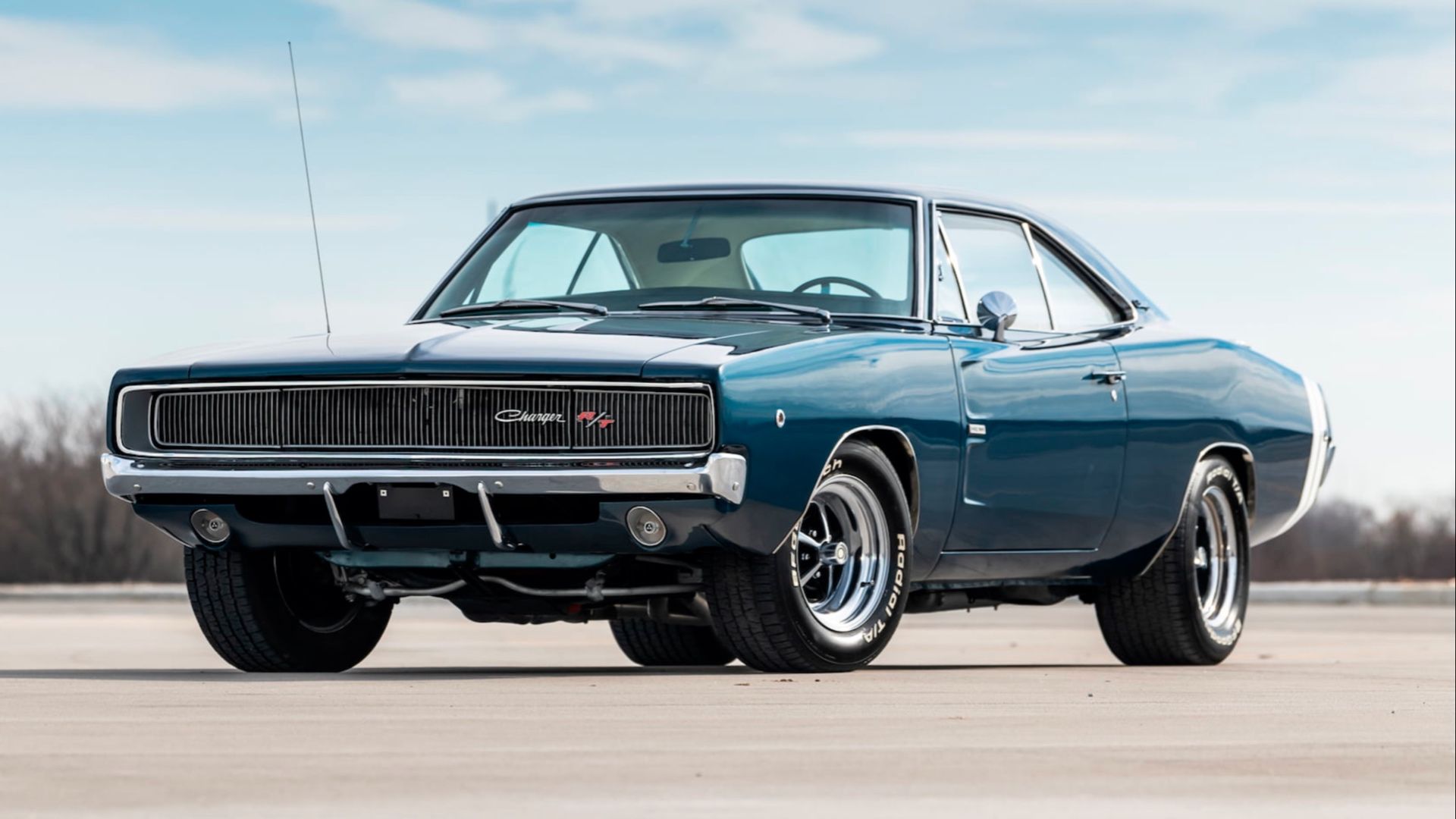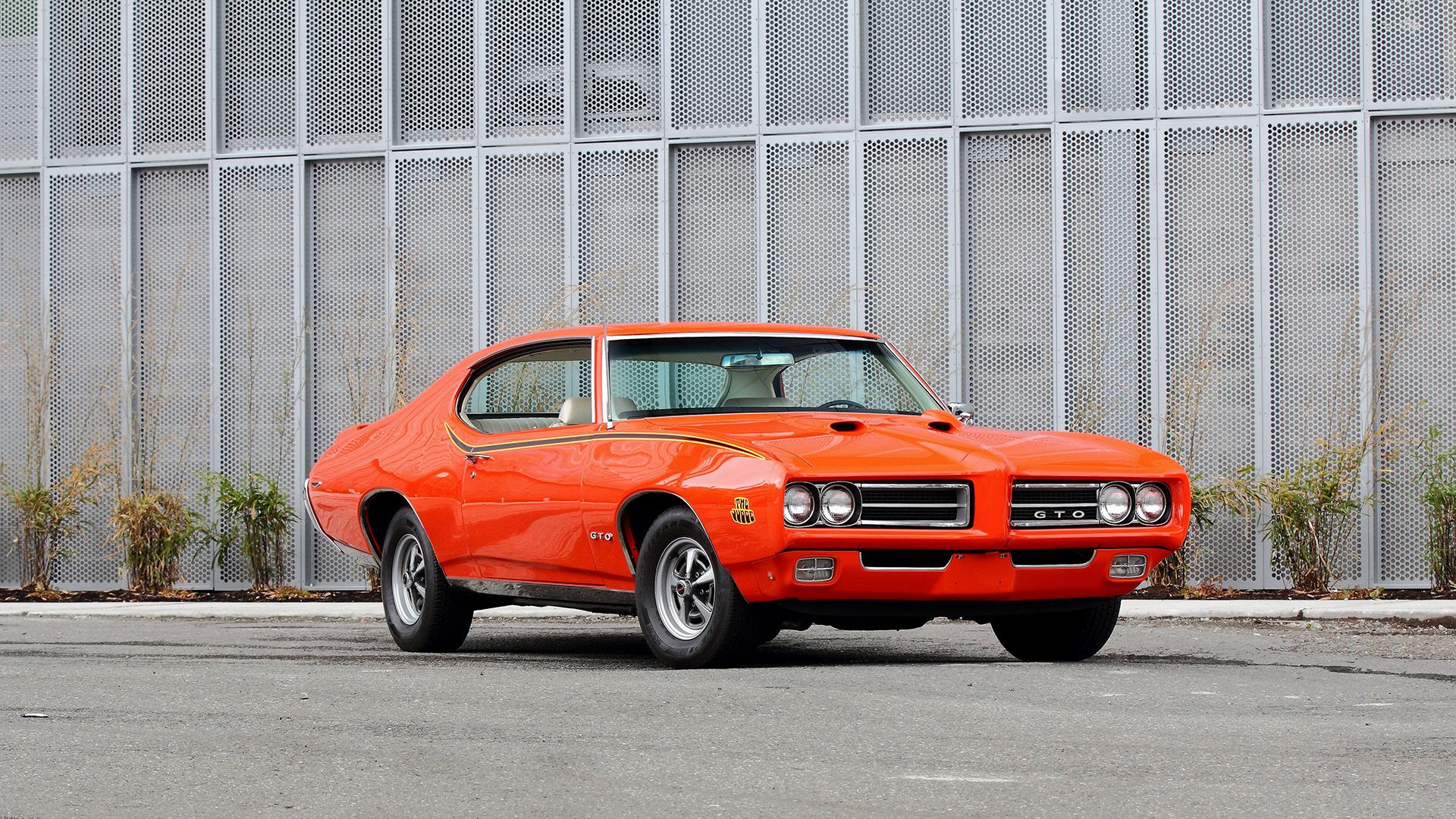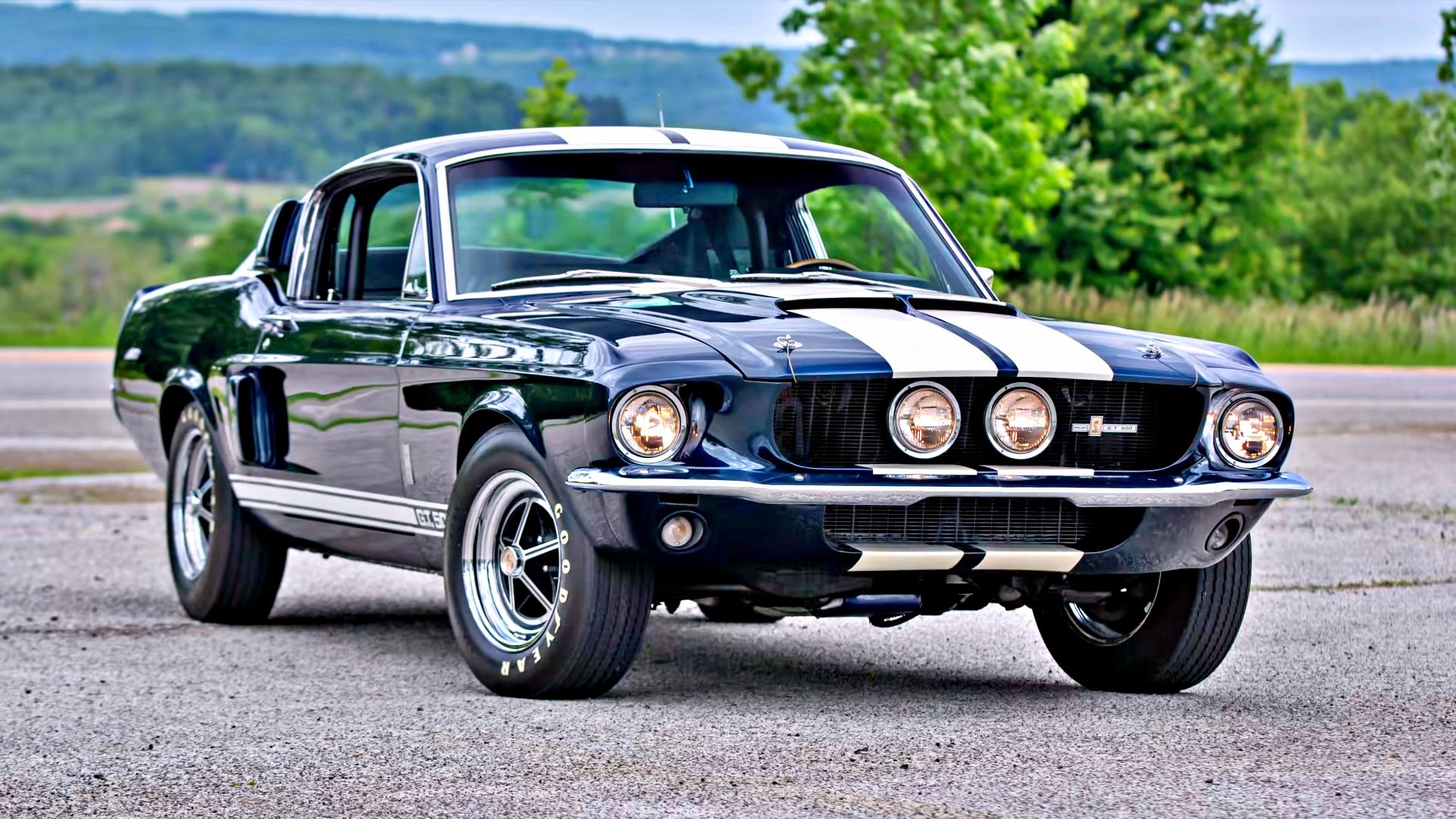The 1960s and ’70s were without a doubt the most important and influential decade for the American Muscle car, with countless models being produced that are still considered the best muscle cars of all time. Dubbed ‘the golden age’ for the muscle car scene, this decade was the first in which manufacturers truly embraced the boxy, all-powerful muscle car philosophy with models like the Pontiac GTO, that being the strong emphasis on size and power in all areas of the car.
Manufacturers such as Ford, Dodge, and Plymouth went head-to-head throughout the entire decade, with the competition meaning that the bar was constantly raised at a rapid rate, leading to the brilliant machines that they produced. At the time, the European car industry was already producing some excellent sports cars, but The United States soon made its mark with these 10 muscle cars of the 1960s.
To give you the most up-to-date and accurate information possible, the data used to compile this article was sourced from various manufacturer websites and other authoritative sources, including Car and Driver.
10 1967 Pontiac Firebird
A Statement Design Style
A car that was made even more popular through the later models released in the ’70s, the year 1967 saw Pontiac introduce the iconic Firebird model, offering a muscle car with a unique appearance but still delivering plenty of performance. The majority of ’60s muscle cars were broad and boxy, but the ’67 Firebird is a much sleeker, smaller take on the design style. But make no mistake, the ’67 Firebird is a muscle car through and through. The classier appearance would turn heads down every street.
Performance Specifications
|
Engine |
6.6-Liter 400 Cubic-Inch V-8 |
|
Transmission |
3-Speed Manual |
|
Horsepower |
325 HP |
|
Torque |
410 LB-FT |
|
Driveline |
RWD |
|
0-60 MPH |
5.7 Seconds |
|
Top Speed |
116 MPH |
(Data was collected from Automobile Catalog)
Another great feature of the ’67 Pontiac Firebird is the large amount of choice buyers had regarding what engine was under the hood. Starting with two inline-six engine options, three V-8 motors were also available to choose from. The base 230 cubic-inch 3.8-liter inline-six could produce 165 horsepower, which was enough to power the lighter muscle car compared to its rivals. However, the top-of-the-range 400 cubic-inch 6.6-liter V-8 turned the power output up to 325 horsepower. This engine allowed the first-ever Firebird to compete right at the top of the muscle scene in the ’60s, but the top speed did fall short compared to others.
Pros
- One of the more unique design styles for a late ’60s muscle car.
- Plenty of engine options to choose from.
- The basis for the future Firebirds which became even more popular.
Cons
- The top speed wasn’t as fast as its competitors.
- Its manual steering system is almost too heavy.
9 1969 Dodge Challenger HEMI
A True American Muscle Pony Car
A nameplate that is still at the forefront of the muscle car industry today is the Dodge Challenger, with the first iteration of the model being released at the very end of the ’60s. Designed to rival the ’67 Mercury Cougar, the first-ever Challenger became the ideal pony car for those wanting the increased size, power, and luxury of the very best in the scene. Unveiled in the Fall of 1969, Dodge intended the model to be in full swing for the 1970 model year.
Performance Specifications
|
Engine |
7.0-Liter 426 Cubic-Inch HEMI V-8 |
|
Transmission |
4-Speed Manual |
|
Horsepower |
425 HP |
|
Torque |
490 LB-FT |
|
Driveline |
RWD |
|
0-60 MPH |
5.8 Seconds |
|
Top Speed |
155 MPH |
(Data was collected from various sources)
Like most muscle cars at the time, there were multiple engine options for the Challenger, with a staggering 9 available options. The smallest 3.7-liter inline-six option produces an honest 145 horsepower, a great choice for those wanting more of a cruiser muscle car. But the engine that caught everyone’s attention is the massive 7.0-liter HEMI V-8 that manages to produce 425 horsepower and 490 pound-feet of torque. Combining this sort of power with a smaller, more stylish body made the first Challenger a real trendsetter upon its release, with modern-day cars still drawing inspiration from its design.
Pros
- A great deal of power for a muscle car of its time.
- Its unmistakable design style is still used today.
- One of the most appealing pony cars for young buyers
Cons
- Limited visibility compared to others in its class
8 1969 Ford Mustang Boss 429
The Perfect Mustang To End The Decade
Very few muscle cars have a nameplate as iconic as the Mustang. After the first-ever Mustang was released in 1964, the rest of the decade saw the nameplate continue to break barriers and set new standards in the muscle scene. In 1969, an all-new variant of the Mustang was released in the form of the Boss 429.
Focusing on performance above anything else, this car was the perfect way to sound on a brilliant decade for Ford. The aggressive redesign of the classic Mustang style with the huge hood scoop makes it a top choice among fans for the best-looking Mustang of all time. Despite being performance-focused, the Boss 429 still had a pleasantly comfortable interior, making it a great all-round muscle car.
Performance Specifications
|
Engine |
429 Cubic-Inch V-8 |
|
Transmission |
4-Speed Manual |
|
Horsepower |
375 HP |
|
Torque |
450 LB-FT |
|
Driveline |
RWD |
|
0-60 MPH |
6.5 Seconds |
|
Top Speed |
118 MPH (limited) |
(Data was collected from Mustang Specs)
Similar to the 302 model, the Boss 429 was placed into production solely to meet homologation standards to gain entry into different classes of racing. The massive 429 V-8 engine powered by this Mustang meant that the engine could be used for NASCAR competition, unsurprisingly making the 429 Boss the most powerful Mustang of the late ’60s and early ’70s.
With an official rating of 375 horsepower, it was speculated that the real power was somewhere between 400 and 500 horsepower. The 450 pound-feet of torque means that the speed of the 429 Boss is still pretty impressive for a muscle car, managing a 0–60 miles per hour time of 6.5 seconds. Today, it’s one of the most desirable Mustangs out there.
Pros
- Purpose-built for speed and performance.
- Aggressive yet stylish design style with the functional hood scoop.
- An impressive amount of horsepower compared to its rivals.
Cons
- Some comfort was sacrificed for performance.
- The limited top speed prevented the car from reaching its full potential.
7 1968 Plymouth Road Runner 426 HEMI
A Real Game-Changer In Terms Of Power
Perhaps one of the most advanced muscle cars of the 1960s is the ’68 Plymouth Road Runner fitted with the 426 HEMI engine. As well as being one of the most striking muscle cars of its time, fully embracing the bold, brash muscle car philosophy, the ’68 Road Runner HEMI possesses rare and desirable additions such as power steering and power disc brakes. These features made the car much more enjoyable to drive as an everyday car and made it easier to handle the monumental power produced by the 7.0-liter V-8.
Performance Specifications
|
Engine |
7.0-Liter 426 Cubic-Inch HEMI V-8 |
|
Transmission |
4-Speed Manual |
|
Horsepower |
425 HP |
|
Torque |
490 LB-FT |
|
Driveline |
RWD |
|
0-60 MPH |
5.5 Seconds |
|
Top Speed |
105 MPH |
(Data was collected from various sources)
This engine would raise the power output to an almighty 425 horsepower and 490 pound-feet of torque, becoming one of the most powerful American muscle cars. The amount of power this engine was able to produce fit perfectly with the nameplate of the car, being one of the most dominant muscle cars on the road at the time. Regarding the vehicles that define the golden age of muscle cars, the ’68 Plymouth Road Runner embodies just about everything that made this decade so special for this side of the industry.
Pros
- A total of six seats in the car for increased practicality.
- Featured one of the biggest engines to date.
- Defines the muscle car philosophy
Cons
- A lower top speed than its rivals.
- Was a slightly more expensive muscle car for the time, making it a little too exclusive.
6 1966 Chevelle SS 396
A Big Step From The Original 1964 Model
A manufacturer that was always in the muscle car mix in the ’60s and beyond is Chevrolet, without a doubt one of the pioneering brands of the muscle car golden age. Earlier on in the decade in 1964, Chevrolet introduced the mighty Chevelle model, a car that was taken to new heights 2 years later in ’66.
The SS variant of the Chevelle was very much its own thing by this time, being much more appealing than the base model due to its increased power and speed. On the outside, the beefy yet stylish appearance of the Chevelle SS made it one of the most desired muscle cars alongside Pontiac and Oldsmobile’s entries.
Performance Specifications
|
Engine |
396 Cubic-Inch V-8 |
|
Transmission |
3-Speed Manual |
|
Horsepower |
360 HP |
|
Torque |
415 LB-FT |
|
Driveline |
RWD |
|
0-60 MPH |
5.5 Seconds |
|
Top Speed |
118 MPH |
(Data was collected from Automobile Catalog)
1966 was the first year that Chevrolet included the impressive 396 big block V-8 engine as standard in the Chevelle, a powertrain that was used for a very limited number of Chevelles the year prior. This engine shot the Chevelle SS up the muscle car rankings, producing 360 horsepower. For a mid-size muscle car, this sort of power was another reason the ’66 Chevelle SS became so popular, being so much fun to drive while remaining practical for everyday use. The car today is one of the most desired collector cars among enthusiasts, showing just how timeless the ’66 Chevelle SS 396 is.
Pros
- An impressive amount of power for a ’66 muscle car.
- A more understated design that appealed to more buyers.
- Massively collectible among enthusiasts.
Cons
- The understated style isn’t as visually appealing as its competitors.
5 1968 Oldsmobile 442
Keeping The Legacy Alive
Oldsmobile is a manufacturer that the muscle car industry owes so much to, with the category tracing its roots back to 1949 with the Oldsmobile Rocket 88. Two decades later, Oldsmobile found itself still at the very top of the muscle scene, with the 442 model being arguably their best car in production.
The 442 body style was particularly attractive, with the car being one of the best to find a balance between the brash muscle car philosophy with smooth, sleek curves. After prior years of the model not quite being able to compete with the likes of Chevrolet and Ford, the ’68 model finally made Oldsmobile a genuine contender in the muscle car war of the late ’60s.
Performance Specifications
|
Engine |
6.6-Liter 400 Cubic-Inch V-8 |
|
Transmission |
3-Speed Manual |
|
Horsepower |
350 HP |
|
Torque |
440 LB-FT |
|
Driveline |
RWD |
|
0-60 MPH |
6 Seconds |
|
Top Speed |
123 MPH |
(Data was collected from Automobile Catalog)
In the year of its release, reviewers had endless praise for the 442’s cornering abilities, earning the nickname of ‘The Handler’ by Car Life magazine. Alongside its stability provided by its anti-sway bar and excellent suspension, the performance of the car can be heavily attributed to the massive 400 cubic-inch motor, producing 350 horsepower for the standard model and 325 horsepower for the automatic. This sort of power was more than an engine to compete with its rivals, with the handling giving the car a slight edge.
Pros
- Keeping the Oldsmobile legacy alive, with the company being credited for creating the first muscle car.
- One of the best-handling muscle cars of its time.
Cons
- Isn’t as reliable or as long-lasting as its competitors.
4 1968 Dodge Charger R/T HEMI
Defines The Muscle Car Philosophy
Similar to the Challenger, the Dodge Charger is a muscle car that’s still prevalent in the muscle car industry. Like the more recent models, the 1968 Charger was personified by its immense size and power, making it one of the most beloved muscle cars of the decade.
Out of all the cars featured on this list, the ’68 Charger perhaps fits the iconic muscle car philosophy, being one of the longest, widest, and most powerful out of them all. Dodge still managed to provide a sleek, stylish design with this “coke bottle” model of the Charger, with this style being the blueprint for years to come.
Performance Specifications
|
Engine |
426 Cubic-Inch V-8 |
|
Transmission |
3-Speed Automatic |
|
Horsepower |
425 HP |
|
Torque |
490 LB-FT |
|
Driveline |
RWD |
|
0-60 MPH |
5.6 Seconds |
|
Top Speed |
150 MPH |
(Data was collected from various sources)
1968 was also the first year of the R/T model for the Charger, putting even more focus on the performance sector. As well as engine options such as the 440 cubic-inch V-8, the best of them will always be the 426 cubic-inch HEMI V-8, managing to produce a staggering 425 horsepower.
The speed truly matched the size of this option, with a top speed of 150 miles per hour and a 0–60 miles per hour speed of 5.6 seconds. The ’68 Charger has since also made an even bigger name for itself in Hollywood, most notably as one of Dominic Toretto’s top choices of cars throughout the 10 films released so far.
Pros
- Its bold, brash design style is one of the most iconic throughout the entire muscle car scene.
- Massive amounts of power to match the car’s size
- Noticeably comfortable and stable to drive
Cons
- The size of the car made it slightly impractical at times.
3 1969 Pontiac GTO Judge
One Of The Most Recognizable Muscle Cars Of all time
Regarded by many as the coolest-looking muscle car of the late ’60s, the 1969 Pontiac GT0 Judge might just be the best Pontiac for a multitude of reasons. Using the same Gran Turismo Omologata tag as the Ferrari 250 GTO which was making strides in Europe, the Pontiac GTO in ways is the 250 GTO of the ’60s muscle car scene. The same year, Pontiac would release the GTO ‘Judge’, becoming the fastest version of the car by far. Characterized by its split grill and bright orange paint color, this car soon became a staple within the muscle car scene.
Performance Specifications
|
Engine |
400 Cubic-Inch V-8 |
|
Transmission |
4-Speed Manual |
|
Horsepower |
366 HP |
|
Torque |
445 LB-FT |
|
Driveline |
RWD |
|
0-60 MPH |
5.3 Seconds |
|
Top Speed |
121 MPH |
(Data was collected from Automobile Catalog)
At first, the Judge was designed to be a lower-priced version of the base model, removing some of the standard cosmetic features inside and out. By doing this, the power-to-weight ratio was increased, leading to the 400 cubic-inch V-8 producing 366 horsepower.
Due to the short 3-year run, the GTO Judge had, it was one of the most desirable muscle cars of its time. Despite not having as high of a top speed as its competitors, the near-perfect body design made it one of the most special cars on the market.
Pros
- A body style that’s considered by many to be one of the best in the muscle car class
- A great deal of torque to provide excellent acceleration.
- Solid Reliability against its rivals.
Cons
- Not as comfortable due to the removal of standard features from the base model
2 1969 Dodge Charger Daytona HEMI
A True Racer At Heart
The base model Dodge Charger was already one of the biggest, most powerful muscle cars on the market in the late ’60s, but the Detroit-based manufacturer chose to take it even further with the Charger Daytona, fitted with a HEMI engine.
The most distinctive difference between the two models is on the outside, with the huge 58-inch rear wing providing more downforce for the car, alongside the pointed front nose with the same purpose. As well as improving the handling on the racetrack, these additional aero elements make for a fantastic-looking version of an already special vehicle.
Performance Specifications
|
Engine |
7.0-Liter 426 Cubic-Inch HEMI V-8 |
|
Transmission |
3-Speed Automatic |
|
Horsepower |
425 HP |
|
Torque |
490 LB-FT |
|
Driveline |
RWD |
|
0-60 MPH |
5.2 Seconds |
|
Top Speed |
200 MPH |
(Data was collected from various sources)
Turning to the engine, what Dodge fitted into the first ever Charger Daytona was truly a game changer. Its 7.0-liter HEMI V-8 powered the Charger Daytona to two NASCAR victories, with the engine producing a whopping 425 horsepower. Out of all the HEMI-powered muscle cars at the time, the race-focused design of the car allowed the HEMI engine to be used to its full potential, being the first NASCAR to break the 200 miles per hour barrier in 1970.
Only 503 ’69 Charger Daytonas were ever made, also making it one of the rarest, most elusive muscle cars of the decade. Today, a pristine condition Charger Daytona can fetch up to $1.4 million. A true era-defining machine.
Pros
- One of the unique muscle car designs with its huge rear wing and front bumper.
- The aerodynamics are unmatched for the Charger Daytona.
- The first muscle car to break the 200 miles per hour barrier.
Cons
- The race-focused car makes it impractical at times for an everyday car.
1 1967 Ford Mustang Shelby GT500
The Ultimate Mustang Of The ’60s
Over the years, the Mustang nameplate has received so many different variants, such as the Boss 429 featured in this article. However, none quite live up to the legacy and iconography of the GT500. The first-ever Shelby GT500 was released in 1967, with the legendary Carroll Shelby once again partnering with Ford to create one of the best muscle cars in the world, being a truly distinct entry into the muscle car scene.
Performance Specifications
|
Engine |
7.0-Liter 428 Cubic-Inch Police Interceptor V-8 |
|
Transmission |
4-Speed Manual |
|
Horsepower |
355 HP |
|
Torque |
420 LB-FT |
|
Driveline |
RWD |
|
0-60 MPH |
6.5 Seconds |
|
Top Speed |
130 MPH |
(Data was collected from Car and Driver)
The year before, Ford and Shelby saw massive motorsport success, dethroning Ferrari at Le Mans. The Shelby GT500’s design was inspired by the iconic GT40 that took the team to victory. As well as being smaller and lighter than most muscle cars at the time, the engine of the GT500 was dubbed the ‘Le Mans Cobra’, with the marketing leaning into the GT40 experience the GT500 can provide.
The massive 7.0-liter 428 cubic-inch V-8 provided so much power for a smaller car, providing 355 horsepower. 55 years later, the ’67 Mustang Shelby GT500 is still considered one of the best Mustangs of all time.
Pros
- Built with the assistance of Carroll Shelby and his team, inspired by the iconic GT40
- One of the best-looking Mustangs of all time.
- Its smaller size provides a much better balance than its competitors, providing a better overall driving experience.
Credit: Source link
